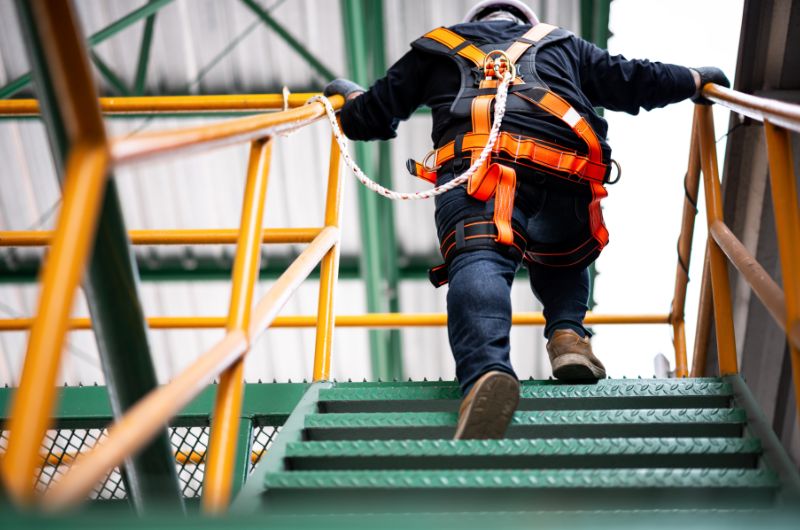Call us at +1 (917)-745-6877 for more info or click here
Safety is a vital aspect of construction business management. With endless potential hazards, dangerous equipment, and work from precarious heights, safety issues must be a priority for employers in the construction industry.
Having an intensive safety strategy in place requires you to research and understand trends and stats internally and across your industry.
This includes looking into statistics beyond the practical elements like equipment and recorded injuries, to ideological and psychological trends like mental health, employee sentiments, etc.
The Bureau Of Labor Statistics (BLS) stated that one in five fatalities among United States workers occurs in construction.
They cited the rate of fatality in construction as the third-highest rate in 2021. The BLS also identified the annual number of construction deaths in 2021 as 1008.
This remains a concern for employees who continue to work in dangerous industries and conditions, particularly as this was a period in which construction projects were still not at their peak post-COVID.
Falls are the leading reason for deaths in construction. According to BLS, in 2021 they were responsible for 34% of construction fatalities. If fall safety was properly dealt with, it would save over 300 people a year.

The Centers for Diseases Control (CDC) also stated a number close to the BLS’, citing falls as accountable for 36.4% of 991 deaths documented in 2019. The Health & Safety Executive UK reported this number at 51% in the period between 2017/18-2021/22.
According to CDC, for deathly falls between 2015 to 2017, small companies had the highest number of incidents. Small construction employers with 20 or fewer workers recorded three out of four fatal falls.
Falls, getting struck by or in contact with objects, getting caught between an object, and electrocutions are the top four causes of fatal injuries and construction deaths. They account for around 60% of fatalities in the industry.
A 2023 CPWR article identified the Fatal Four as responsible for 65.5% of construction deaths from 2011 to 2021:
However, in 2019 alone, slips, trips, and falls altogether resulted in 418 of the 1102 fatalities in the US construction industry. This means that they accounted for a high 37.9% of construction deaths.
Despite the severe impact of falls in construction, lack of fall protection for construction workers remains the highest reason for citations during OSHA inspections.
In 2021, OSHA cited 5465 fall protection violations in 5327 inspections. Fines amounted to $28.8 million.
Understandably so, OSHA’s Standard obliges all construction businesses to make fall protection available to their workers. This includes protective gear and equipment for specific working conditions, including correct harnessing for work on roofs, stair rails, and more.
Not only must construction employers make this equipment available, but they must also train employees in using it.
OSHA requires every employee to be trained well. They should be able to recognize and identify hazards and understand how to minimize them to reduce falls. However, in 2021, OSHA had 1687 citations for lack of fall protection from 1626 inspections.
These numbers illustrate that despite companies experiencing fatalities, injuries, and other losses, due to falls, there remains a lack of sufficient initiative in addressing falls.
Construction companies must do more to deal with this fatal issue.
According to the BLS, “the absence rate is the ratio of construction workers with absences to full-time wage and salary employment.” Absences resulting from illness or construction injury were much higher in contrast to the 0.7 rate for “other reasons”.
BLS defines absences as the occasions when people that generally work full-time for 35 hours or more work less than 35 hours.
Reasons considered in their research include illness, injury, medical issues, childcare challenges, personal reasons, military or civic duty, and paternity or maternity days.
The lost working time rate records the “hours absent as a percent of hours usually worked”. This lost working rate was higher than 0.3% for “other reasons”.
It is one of the direct costs resulting from worker injuries. This is because lost time results in project delays and other costs.
What this stat means is that construction employees spent significant amounts of time away from work due to an illness or nonfatal injury.
This stat from Construction Dive emphasizes the importance of inspection and regulation compliance by construction companies.
Employers must prioritize regulation compliance as equal to on-the-ground enforcement. They must also remain transparent and honest about the issues faced in their working environment during inspections.
Furthermore, employers are encouraged to see safety performance as an inherent part of their operations. They should evaluate and address all hazards that may surface during an inspection.
It is the employers’ responsibility to keep workers safe and nurture a culture of safety on job sites. And safety violations can have financial, productivity, and well-being costs to your company.
Accidents, work-related injuries and illnesses, and fatal construction injuries have dire consequences for construction firms. When the causes of incidents go unaddressed, this has a knock-on effect on your employees, reputation, and bottom line.
What the statistics above show us is that illness and injury remain very serious and persistent issues in construction. Not only do they affect employees’ performance and presence at work. But they can also, and do, lead to death.
Not providing the right equipment and lack of training makes you responsible when such incidents occur. It also makes you liable for action by regulating organizations.
OSHA’s inspection numbers illustrate a need for construction companies to hunker down on their safety initiatives and take safety seriously.
Although the construction industry is certainly much safer than it was over 50 years ago, there remains a long way to go before employees can feel confident that a workday won’t be their last.
So, it is vital for construction companies to establish relevant and quality training programs, safety systems, and compliance frameworks. This will help ensure everyone can follow the correct safety protocols, which will reduce the number of accidents and injuries.
For a comprehensive safety and compliance app, check out SkillSignal today and improve the safety of your employees.

NEW YORK, N.Y., Sept. 13, 2018, 8 a.m., EDT -- SkillSignal LLC, a New York-based tech company founded by Sebastien de Ghellinck, released an innovative…

Today, there is no surprise that technology is paving the way for safer and enhanced practices. Similarly, like any major industry, the construction industry is…

There is a significant amount of risk for workers in the construction industry. And as such, there are loads of occupational health and safety standards…
Selected as #1 by top ENR General Contractors. Loved by thousands of Trade Contractors across the US.


















